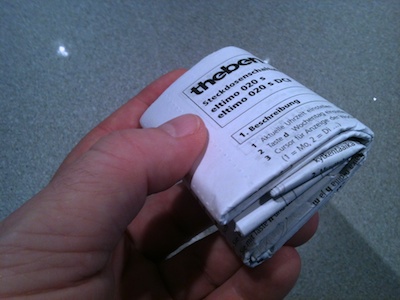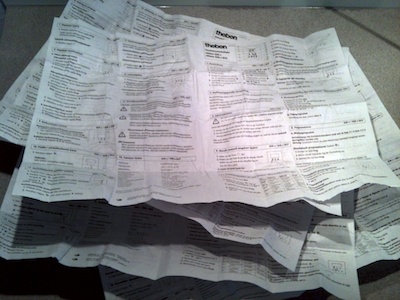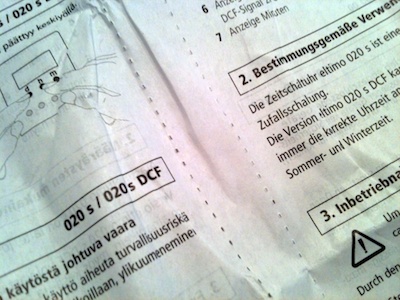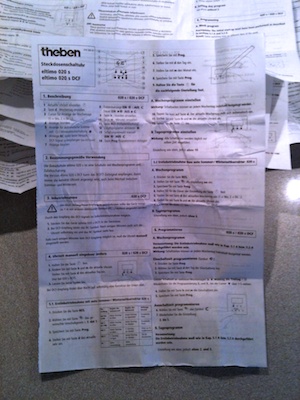Manuals that ship with hardware appliances often contain instructions in more than one language. Such multi-lingual documentation simplifies logistics and reduces costs, because only a single document needs to be handled during production, and a single product package can be sold in multiple countries.
For the users, however, these manuals come at a price. They can be more tedious to navigate than a single-language document, and they require more storage space.
When I recently unpacked an electronics gadget, the manual inside the box was folded into a dense, almost children’s fist-sized wad of paper.

At first sight, it reminded me of an oversized version of the information flyers that you find in medicine packages — and whose folding pattern is so complex that you can never get it back into the box.
Unexpectedly, the wad unfolded into several individual double-sided sheets, each of which contains instructions in two languages.

Two perforation lines run from top to bottom along the sheets’ centers.

Thanks to the perforation, you can rip each sheet in two, so that you end up with a customized manual that only contains instructions in your own language.

This design is a double-edged sword, because you throw away the majority of the printed document, so that the waste of resources — paper, ink, and energy — is the same as with bound booklets.
Customizing the document in this manner does make it more usable, though, because it reduces its content scope and physical size to just exactly what you need.
I wonder if there is a way to apply this approach to larger documents whose contents exceed a single page per language.